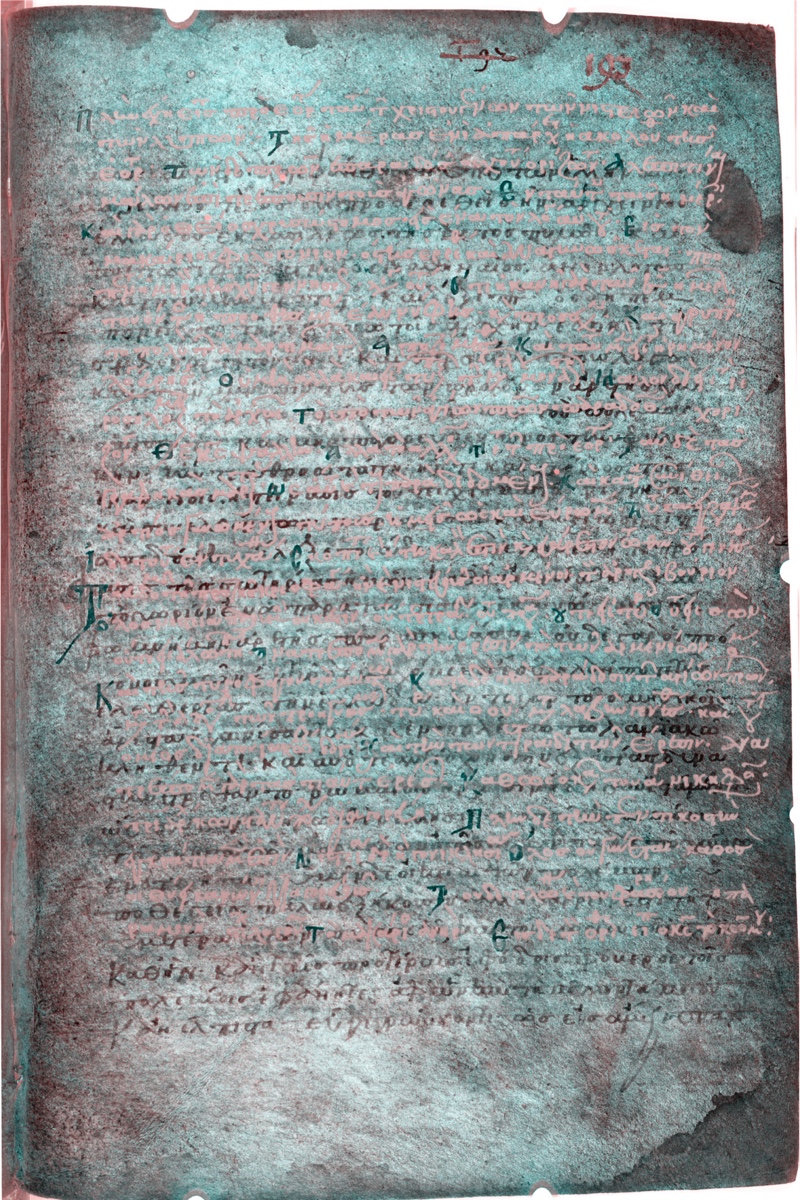Goths vs. Greeks: Epic Ancient Battle Revealed in Newfound Text

Fragments of an ancient Greek text telling of an invasion of Greece by the Goths during the third century A.D. have been discovered in the Austrian National Library. The text includes a battle fought at the pass of Thermopylae.
Researchers used spectral imaging to enhance the fragments, making it possible to read them. The analysis suggests the fragments were copied in the 11th century A.D. and are from a text that was written in the third-century A.D. by an Athens writer named Dexippus.
During Dexippus' life, Greece (part of the Roman Empire) and Rome struggled to repel a series of Gothic invasions. [10 Epic Battles That Changed History]
"Warding off the battle columns"
Lecturers Christopher Mallan, of Oxford University, and Caillan Davenport, of the University of Queensland in Australia, recently translated one of the fragments into English. The translated text, detailed in the Journal of Roman Studies, describes the Thermopylae battle: At the start of the fragment, "battle columns" of Goths, a people who flourished in Europe whom the Romans considered barbarians, are attacking the Greek city of Thessalonica.
"Making an assault upon the city of the Thessalonians, they tried to capture it as a close-packed band," Dexippus wrote of the attack, as translated by Mallan and Davenport. "Those on the walls defended themselves valiantly, warding off the battle columns with the assistance of many hands."
Unable to capture Thessalonica, the Goth force turned south toward Athens, "envisioning the gold and silver votive offerings and the many processional goods in the Greek sanctuaries, for they learned that the region was exceedingly wealthy in this respect," Dexippus wrote.
Sign up for the Live Science daily newsletter now
Get the world’s most fascinating discoveries delivered straight to your inbox.

A Greek force assembled at the narrow pass of Thermopylae in an attempt to stop the Gothic advance. "Some [of the Greeks] carried small spears, others axes, others wooden pikes overlaid with bronze and with iron tips, or whatever each man could arm himself with," Dexippus wrote. "When they came together, they completely fortified the perimeter wall and devoted themselves to its protection with haste."
"Terrifying to the enemy"
In the text, Dexippus said the commander of the Greek force, a general named Marianus, tried to raise morale by reminding the Greeks of the battles their ancestors had fought at Thermopylae in the past, including the famous fifth-century B.C. battle between the Persians and a Spartan-led force. [In Photos: Spartan Temple and Cultic Artifacts Discovered]
"O Greeks, the occasion of our preservation for which you are assembled and the land in which you have been deployed are both truly fitting to evoke the memory of virtuous deeds," Marianus' speech to his troops reads, as translated from the fragment. "For your ancestors, fighting in this place in former times, did not let Greece down and deprive it of its free state.
"In previous attacks, you seemed terrifying to the enemies," said Marianus. "On account of these things, future events do not appear to me not without hope …"
The fragment ends before the completion of Marianus' speech, and the outcome of the battle is uncertain, researchers said.
Marianus may well have given a speech (or speeches) to the troops, the researchers said; however, the speech recorded in this text was likely invented by Dexippus, something ancient historians often did.
Though no one has an exact date for the Thermopylae battle, it was likely fought in the 250s or 260s, researchers said.
An emperor fights
The Thermopylae fragment is one of several written by Dexippus, discovered in the Austrian National Library book, that discuss the invasion of Greece by the Goths. The Thermopylae battle fragment was first published in 2014 in German in the journal Wiener Studies by Gunther Martin and Jana Grusková, researchers at the University of Bern and Comenius University in Bratislava, respectively.
Martin and Grusková have published several articles in German and English on the other fragments. Some of the fragments tell of an attempt by the Roman Emperor Decius (who lived A.D. 201-251) to stop the Gothic forces, as described by Martin and Grusková in 2014 in the journal Greek, Roman and Byzantine Studies. In those fragments, Dexippus wrote that Emperor Decius suffered a series of setbacks, losing territory and men.
Like Marianus, Emperor Decius also supposedly gave a speech to raise morale among his troops. "Men, I wish the military force and all the provincial territory were in a good condition and not humiliated by the enemy," Emperor Decius told his troops (translation by Martin and Grusková).
"But since the incidents of human life bring manifold sufferings … it is the duty of prudent men to accept what happens and not to lose their spirit, nor become weak."
Again, this speech may have been invented by Dexippus.
Follow Live Science @livescience, Facebook & Google+. Original article on Live Science.

Owen Jarus is a regular contributor to Live Science who writes about archaeology and humans' past. He has also written for The Independent (UK), The Canadian Press (CP) and The Associated Press (AP), among others. Owen has a bachelor of arts degree from the University of Toronto and a journalism degree from Ryerson University.










